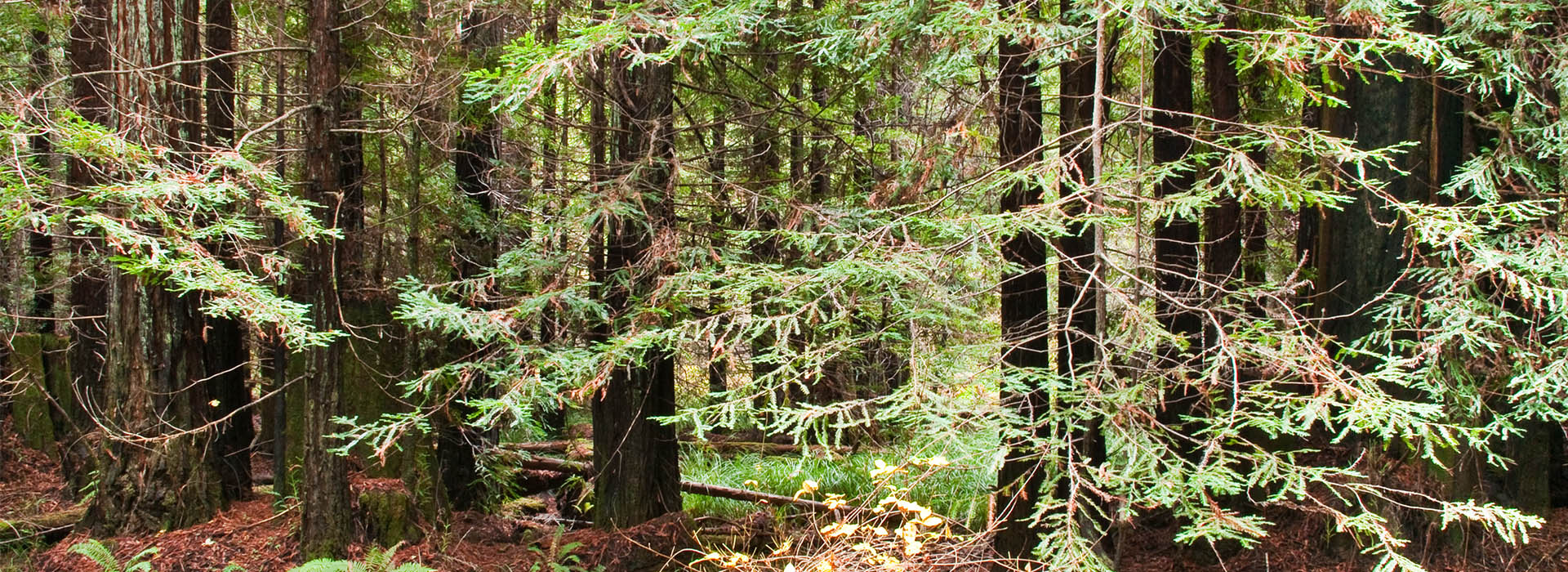
Herbicides
A key component of our forest management is to restore the conifer balance on our forestlands. Mendocino Redwood Company has an imbalance of hardwoods and conifers on a large portion of its forestlands while the forestlands at Humboldt Redwood Company have generally retained an appropriate conifer balance (only the southern tracts having an out of balance hardwood component). Herbicides are a key tool in restoring the conifer balance and also in controlling invasive, exotic plant species. Accordingly, MRC uses herbicides more commonly to promote redwood and Douglas-fir while reducing the density of tanoak (a native hardwood). The restoration of conifers on MRC forestlands is technically challenging and will take many years.
There are many reasons for the current imbalance of hardwoods on MRC forestlands. First, MRC has had to play “catch up” in order to grapple with forest conditions that were inherited from previous land owners and past land use. In the early part of the 20th century, persistent burning to convert forests to pastures produced thousands of acres of grass and brush. Tanoak was often the first and only tree species to re-occupy these sites when reverted back to forest. Once disturbed by cutting or burning, tanoak trees sprout aggressively; they rapidly overtake conifer seedlings and suppress regeneration of the redwood and Douglas-fir forest. Second, the past practice of “high-grading” – removing the best conifer trees from a forest and leaving only smaller ones along with the tanoak allowed tanoak to out-compete the conifers and become the dominant tree species.
Both companies use herbicides as part of their forest restoration either to restore the conifer balance or control invasive, exotic plants. These herbicides are applied manually on a plant-by-plant basis. Manual applications include both “foliar” and “frill” treatments. In a foliar application, a competing tanoak tree is cut down and a follow-up crew returns and applies an herbicide mixture to the stump sprouts. For exotic species control, crews apply herbicide mixtures to individual invasive plants. A frill treatment entails cutting through the bark of the hardwood and applying herbicide to its cambium (the thin layer that moves water and food between roots and the top of the tree).
The use of herbicides is regulated by the Mendocino County Agricultural Commission for MRC and the Humboldt County Agricultural Commission for HRC; as well as the Regional Water Quality Control Board for both companies. We require all contractors employed for vegetation management to use protective gear and to confine applications of herbicides to use during appropriate weather conditions. We follow strict guidelines that meet and often exceed government regulatory requirements; these guidelines include:
- Only using herbicides to address ecological imbalances on our forestlands;
- Applying herbicides manually on a plant-by-plant basis with fully-trained applicators who report herbicide usage to the County Agricultural Commissioner;
- Actively control invasive, exotic plants to protect native forest species working in cooperation with the Bureau of Land Management, state parks, and other landowners;
- Applying herbicides only outside watercourse protection zones of Class I and Class II streams and more than 25 feet from a Class III watercourse;
- Maintaining a 25-foot no-herbicide buffer around sensitive plant populations (HRC).
Both companies continue to search for methods to reduce our needs for herbicides. In fact, MRC has tested and monitored several herbicide alternatives including eucalyptus oil, neem oil, and wheat gluten. So far, however, these alternative methods are not as effective and are more costly than the herbicides used today. In some stands where tanoak is less pervasive, MRC can use chainsaw cutting to reduce tanoak competition. It is likely that this method of control will be continued in these stands as an effective, non-chemical treatment for tanoak control. A current concern related to the use of herbicides is the risk to firefighters related to burning chemicals in treated trees — a study by the U.S. Forest Service found no herbicide in the smoke from fires in areas where herbicide was used.
In the future, the annual herbicide use for both companies will vary dependent on the level of harvest and which forest stands are chosen for restoration. The trend, however, is a reduction in herbicide use over the long-term. We are committed to phasing out the use of chemical herbicides as a routine management tool in keeping with Forest Stewardship Council (FSC) principles as we transition towards uneven-aged silvicultural regimes.
From our past experience, we recognize that it is currently unrealistic to exclude herbicides as a management option. Nevertheless, we are committed to exploring alternatives for herbicides. Until better solutions become available that are practical, environmentally suitable, and economical, we will continue to use herbicides responsibly and in a limited fashion to:
- Restock conifer stands previously impacted by hardwood competition;
- Promote conifer growth where there has been no effective vegetation management;
- Foster conifer growth where it is being retarded;
- Contain non-native invasive plants; and
- Conduct experiments that could further reduce herbicide use.
For more information on our vegetation management policies and guidelines, including our policies regarding herbicide use please read our Vegetation Management Policy.